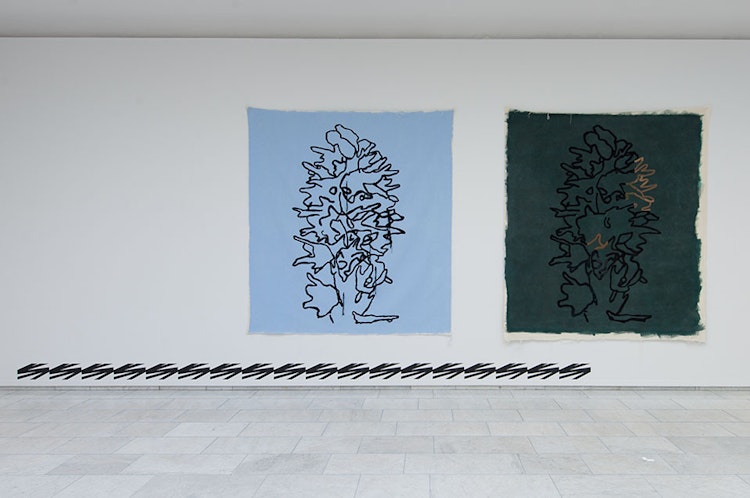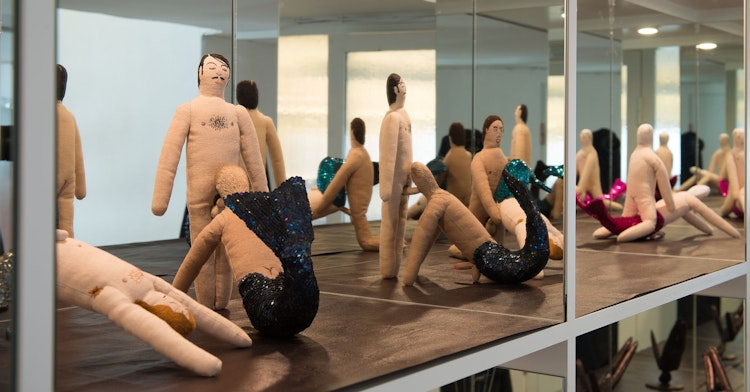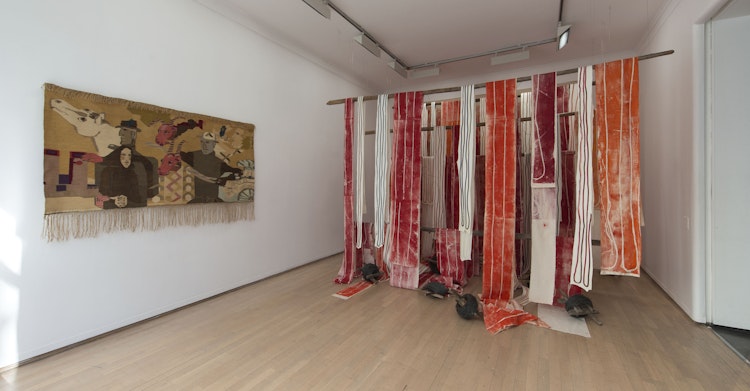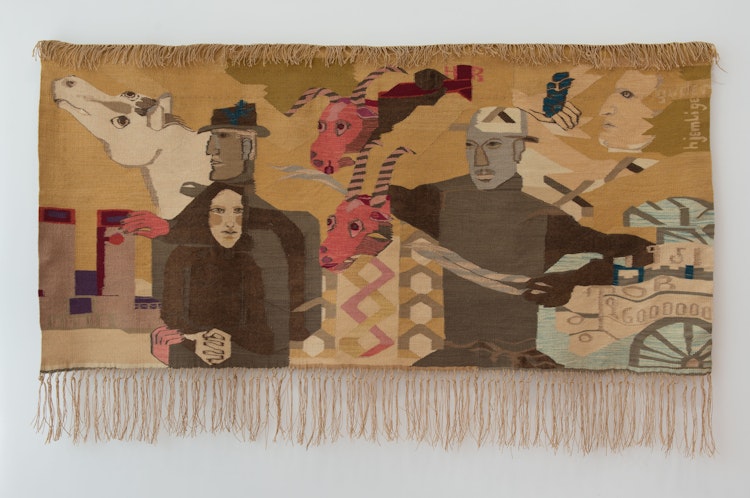

Toril Moi
Arlyne Moi
This essay by Toril Moi investigates the power of textiles, as a potentially feminist endeavour. The essay was published in the exhibition catalogue for Ode til en Vaskeklut, Hymne til en Tiger, a survey of textile art from Norway in connection with the 40th anniversary of Norwegian Textile Artists (2017).
‘Woman is the Other’, Simone de Beauvoir declares. Man is the One, the first. He is the norm, she the exception. Her theory explains why it has been so hard for women to be acknowledged as great artists, or great writers. If men’s interests are taken to be synonymous with Art, women’s interests will be cast as ‘feminine’. On this logic, women’s art will be considered separate and particular, as something that may well be good and interesting in its own right, but which still — unlike men’s forms of expression — will never fully partake of the essence of Art. Used against ambitious women, the concept of ‘femininity’ constrains women’s freedom of expression. If women are adamant about being artists, according to the guardians of masculine dominance, they should at least restrict themselves to approved ‘feminine’ forms of expression.
Women who rebel against such norms can easily be caught in a double bind. Struggling against the canonised norms, they rightly claim the value of femininity. Yet then they risk being imprisoned in its narrow confines. Such arguments do not challenge the underlying logic that turns ‘femininity’ into the Other. But what should women do instead? How can women gain access to the universal, to the great Art itself? For as long as the feminine is opposed to the universal, and the masculine is perceived as building and sustaining the universal, women can only become great artists if they manage to present themselves as gender-neutral. This is not true for men, who can express their masculine experiences without this being defined as ‘masculine’ art. Yet it is taken for granted that when women express their female experiences, they necessarily express ‘femininity’ and nothing else. This forces women artists to deal with a conflict most male artists don’t even notice. (Men who belong to an oppressed minority are often exposed to the same logic – not because they are men, but because they create art that expresses the experience of an immigrant, a black man living in a white society, a Jew, a Palestinian, a homosexual, and so on.)
Great art emerges in the space created by the tension between the dishrag and the tiger


In a pre-industrial society, pursuits such as weaving, knitting, sewing, cloth-dyeing and many other activities associated with textile art were in fact housework. According to sexist logic, therefore, textile art is not only women’s art, but housework-art. Textile art becomes not only the Other, but the Other’s Other. No wonder that textile artists finally organized themselves in 1977, in the decade of second-wave feminism. The battle waged by the organization Norwegian Textile Artists (Norske Tekstilkunstnere, NTK), to have textile art recognised as a genuine art form in Norway, has been – and remains – a feminist battle.

Let us now imagine – at least for a moment – that NTK has won the battle. That there is no longer a single soul in Norway who thinks of textile art as a less valuable or less interesting art form than painting and sculpture. What happens to ‘femininity’? If women can express themselves as they wish, if nobody expects all women to express the same essence, namely ‘femininity’, the whole concept would explode. And if that happens, women can begin to talk about housework again, freely, eagerly, in a spirit of curiosity and discovery. For example by writing an ode to a dishrag.
I myself do intellectual work. Women have had no easier a time gaining access to Philosophy and Theory than to Art. Men who write philosophy are often not particularly interested in housework, this mundane, repetitive striving that never comes to an end. Every single day food must be prepared. With depressing regularity, dust piles up. Clothes get dirty and must be washed, over and over again.
Such eternal maintenance seems like art’s antithesis. An artist or a writer finishes a project. She creates something that remains, something that is completed once and for all. But housework is never like that. Regardless of how brilliant, fragrant, shining and beautiful the house becomes, it never lasts. A little time passes. Then the house is just as dusty and messy as before. Crafts endure longer. You knit a sweater for a young child. Eventually it becomes too small. You give it away. With luck, one day it will be worn-out. Then we throw it away.


But in spite of all this, I have always thought that intellectuals and artists benefit from reminding themselves of the nature of housework. For we don’t really finish our own work either. Regardless of what we write or make, the result feels like a small fragment of something larger, like the top of an iceberg. We know all too well how much more we could have done. This is why we constantly return to the task, try again, write some more, always in the hope of capturing the subject-matter, the theme, the motif better the next time around.
Housework, moreover, expresses the essence of existence better than a finished work of art. We come into the world, we strive and labour, love and hate, experience sorrow and joy. And then it’s over. It doesn’t last. In a hundred years nobody will remember us. Our great-grandchildren have no clue about who we were. Nothing remains. We write and create art in the hope that something will last, that something will be there after we are gone. But the truth is that most artists (and just about all professors) will be as forgotten as most housewives.
This is why it is important to understand the joys of housework. The moment when the fragrance of fresh-baked bread fills the house. The pleasure of running one’s hand over a freshly-ironed garment. The joy of having made something beautiful, something good, just here and now. We cannot enjoy these moments if we immediately start lamenting their ephemerality. The person who can value the fleeting joys of housework grasps the nature of existence.

But what about the tiger? The tiger reminds us that women have no duty to focus on housework. The tiger has no interest in the aroma of freshly baked bread. If you let it in the door, it will wreck the living room in seconds. It sharpens its claws and tears tablecloths and curtains to shreds. The tiger enjoys the open grassland and the shadow of mangrove swamps. It is not into self-sacrifice. It is the embodiment of amoral self-assertion. Blood runs from the tiger’s tooth. Yet we still admire it. We wring out the dishrag and dream of the tiger’s life. The tiger respects no norms. It follows its tiger nature and does exactly as it pleases. We admire its beauty, strength and freedom. But most of all we admire its recklessness.
Great art emerges in the space created by the tension between the dishrag and the tiger.